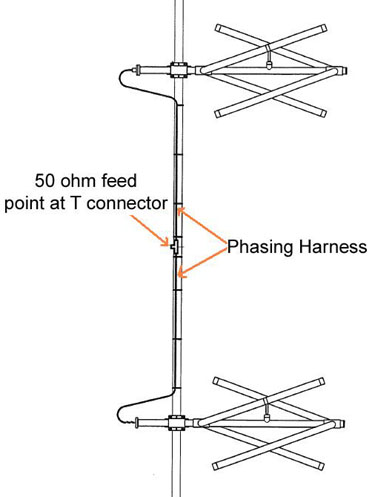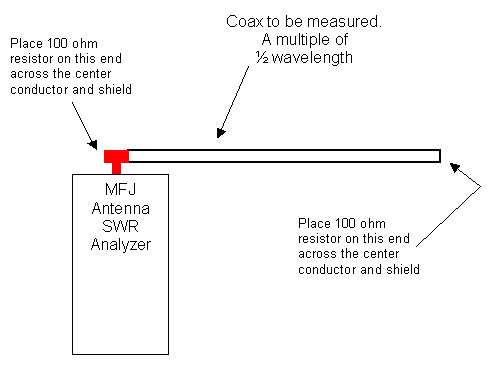
Lately, at the workplace, I had the possibility (or requirement) to make a phasing harness for a two-bay antenna. However, I had trouble. I located online a few years back exactly how to do this for my certain antenna scenario, today the website was gone! So I had to figure it out on my very own. After lots of hours of checking out my (very poor) notes, I figured it out.
What I had was a set of circular polarized antennas that were to be established as a two-bay antenna system. Each antenna had a resistance of 100 ohms. Below is what I came up with, and also it seems to work.
In a transmission line, such as coax, the insusceptibility of the load repeats itself every half wavelength. Because each antenna is tuned to 100 ohms at vibration, all I need to do is reduce two lengths of coax precisely to a several of a half wavelength, as well as link them to a Tee adapter. What this does is takes the two 100 ohm impedances of each antenna and placed them in parallel with each other. The end outcome is a 50-ohm feed point, which enables me to connect my 50-ohm coax for the correct match.
However, there is one trouble. When coax is produced, there is a 10% resistance in the speed variable of the coax. So as for I am concerned, simply taking the released velocity variable of the coax could be bothersome. So I needed a way to measure or tune the private sizes of coax to some multiple of a half wavelength.
Using history, below is a representation that resembles the antenna system I was setting up. The two items of coax I had to specifically reduce are classified as "Phasing Harness":

So what I had on hand was Belden 8237 RG-8-U Kind coax. This has a rate variable of 0.66 and also a particular impedance of 52 ohms. So based on these numbers, as well as the spacing in between the two antenna bays, I chose to utilize a size of coax that is 7 fifty percent wavelengths long. Actually, this is a method too long for my needs, yet that's ok.
Right here is what I came up with, I will imitate both antennas at vibration with a non-reactive 100-ohm resistor. So I constructed my very own dummy lots within a male type-N connector, as well as on the back of a female type-N adapter. Next off, I determined the electric fifty percent wavelength of a piece coax utilizing the adhering formula:
L (inches) = (5904 * VelFactor) / Freq. (mHz)
This will offer you the size for one fifty percent wavelength. In my situation, I selected 7 fifty percent wavelengths, so I increased the outcome by 7, then added 15%. This site is deliberately also long so I can tune it into the desired frequency. On one end of the coax, I placed a port on it. The other end is the end that I will certainly be trimmed to size. So on this end, I put an adapter on it, however, I don't solder it, which is ok for momentarily measuring its length.
Here is a representation of my test arrangement utilizing an MFJ-209 antenna analyzer:

Begin your regularity move slightly above your desired regularity, then begin brushing up-down. As you tune with the frequency variety, you will certainly locate a factor where the SWR goes to virtually 1 to 1. Commonly I move the regularity a number of times to the nadir of the SWR in both directions. This ensures a precise frequency analysis for the coax. Takedown the regularity.
Next, trim the coax by an inch, and repeat the steps above up until the SWR dips at the exact same frequency as your antennas are powerful for. Do this for both items of coax, which make up the phasing harness.
When you are through with both pieces of coax, you currently have actually a finished phasing harness tuned to the exact same regularity of your antennas.
This write-up was initially uploaded on www.mikestechblog.com Any kind of reproduction on any other site is banned and an offense of copyright legislation